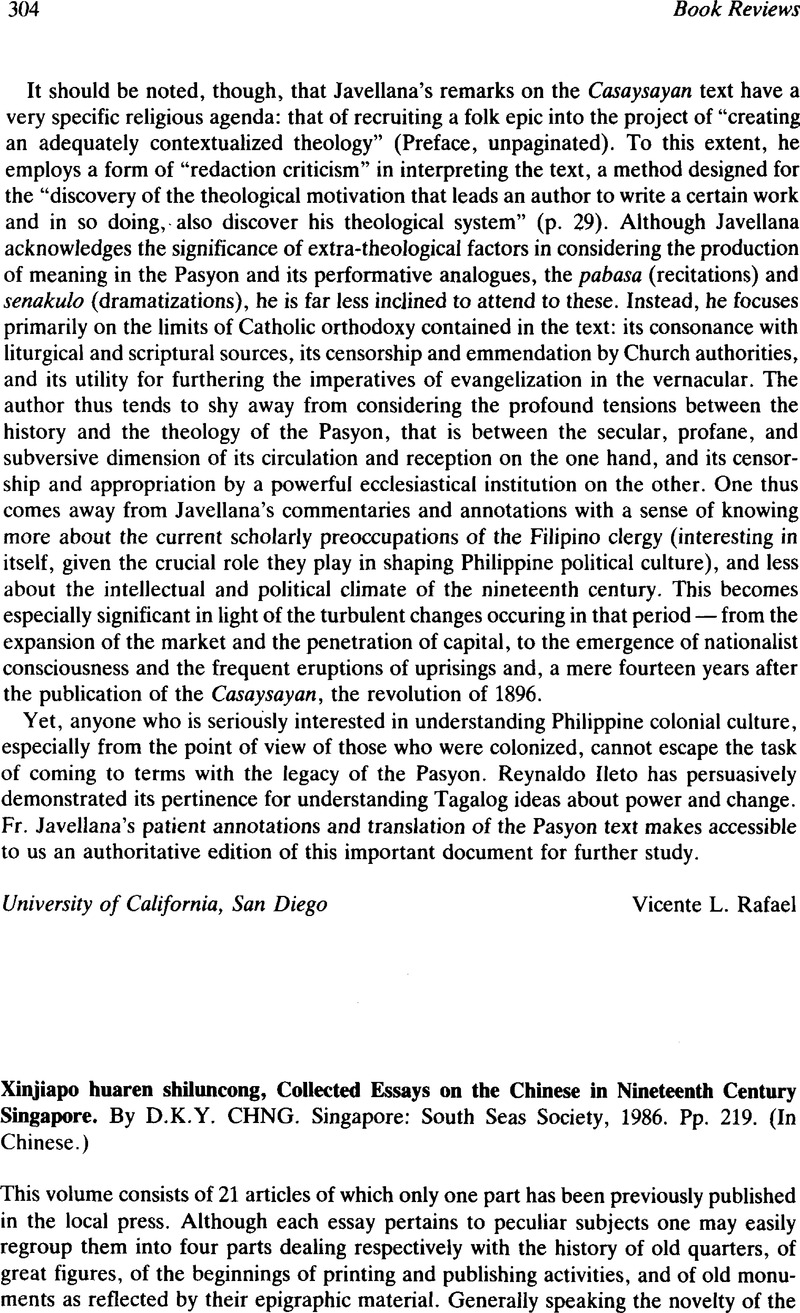No CrossRef data available.
Published online by Cambridge University Press: 07 April 2011

1 Undoubtedly the commerce of the great Chinese merchants of the time was concentrated in these two arteries and the façades of their firms greatly impressed the Westerners. For the Colonial and Indian Exhibition which was held in 1886 in London the Government of Singapore decided to send a miniature model representing the Northern side of Boat Quay and two years later the Dutch Sinologist G. Schlegel who had been impressed at its sight wrote a short commentary (“A Singapore Streetscene” in Internationales Archiev für Ethnographie, Bd I, 1888) which was accompanied by a coloured plate. The miniature model was finally donated to the Ethnographic Museum in Leiden (Holland) where it is eventually still kept in the reserve.
2 See Britton, Roswell S., The Chinese Periodical Press 1800–1912, Reprint (Taipei: Ch'eng-wen Publishing Company, 1966), p. 21.Google Scholar
3 The inscription is rather blurred so that the date of the bell cannot be given with certainty. Chenghua 5 or 1469 or early 1470 is the reading advanced by Professor W. Franke.